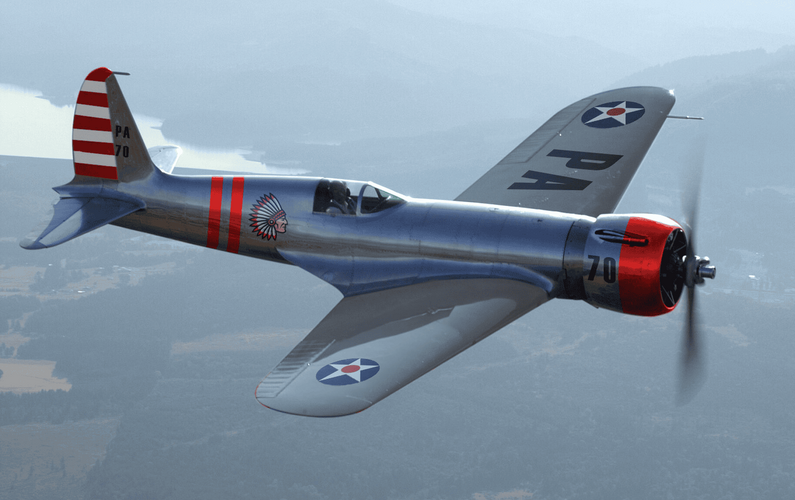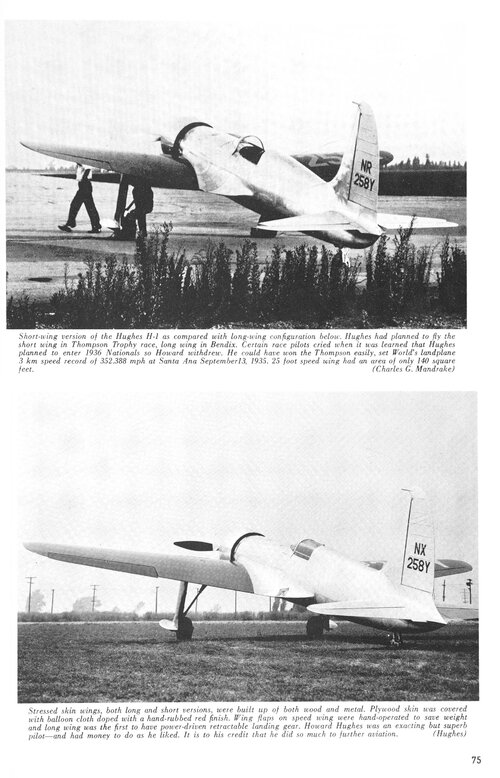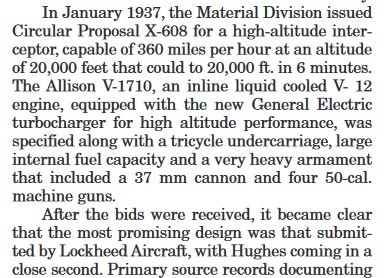NoOn the H-1/Zero myth

Did Howard Hughes Design Japan's Zero Fighter?
The truth behind the rumor that Howard Hughes designed the Zero fighter plane used by Japan in World War II.www.historynet.com
You are using an out of date browser. It may not display this or other websites correctly.
You should upgrade or use an alternative browser.
You should upgrade or use an alternative browser.
Hughes H-1 Pursuit Variant
- Thread starter GTX
- Start date
PabloSniper
ACCESS: Confidential
- Joined
- 16 June 2024
- Messages
- 52
- Reaction score
- 58
Hi Greg,
was finally reading back through the site and found your post.
In 'McDonnell Douglas Aircraft Since 1920: Volume 2" Rene Francillon paints a rather different picture of Hughes pursuit notions.
To start with he states that, unbeknown to Dick Palmer and the crew building the H-1, Hughes had set up another crew to build a fighter variation for entry in the Air Corps Pursuit Competition scheduled at Wright Field in August of 1935. Nothing came of it as the fighter, which had been given the martial sounding designation XP-2, could not be completed in time for the competition. Evidently there was an incident where Hughes purposely misrepresented a statement made by the Air Corps project officer, this began the friction between Hughes and the Air Corps that was to reach a critical point with the D-2/XF-11 debacle.
The next chapter in the sage was that following his trans-continental record flight in the H-1B, Hughes ignored an informal request by the Air Corps to bring the aircraft to Wright Field and discuss a possible pursuit development. Instead Hughes had the aircraft placed in storage.
The final act was that after a little less than three years of storage the aircraft was 'transferred to the Timm Aircraft Company in a $100,000 dollar paper transaction..in 1940 a desultory effort was made to modify the aircraft into an all-metal fighter. Nothing came of the project and that was the end of the H-1 as fighter story.
Francillon does not mention what the modification would have entailed...and its possible that nobody left alive knows what was intended or actually done.
However, going from the fact that it was intended for the 1935 Pursuit competition and based on the entries from Seversky(XP-1), Curtiss(Hawk 75B) and Vought V-141(Northrop N3)...I'd say minimal change in appearance and a pair of Browning machine guns, one .30 and one .50, firing through the propeller. May do that with the 'long-wing' version in the CMR twin-kit.
Cheers, Jon
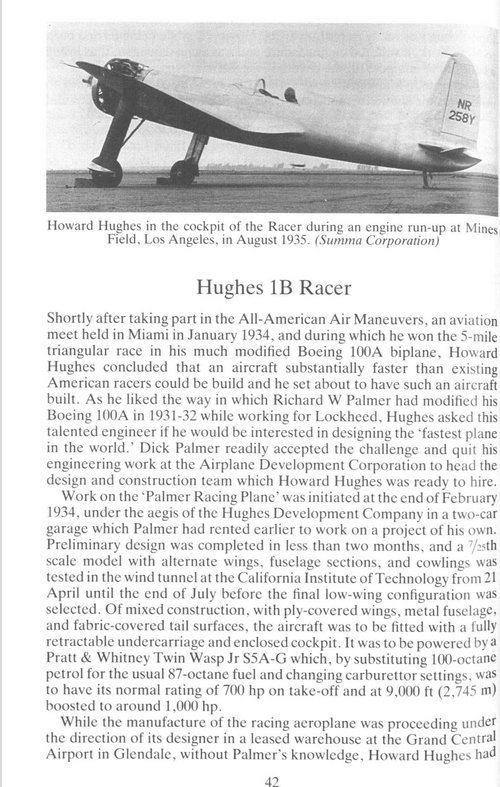
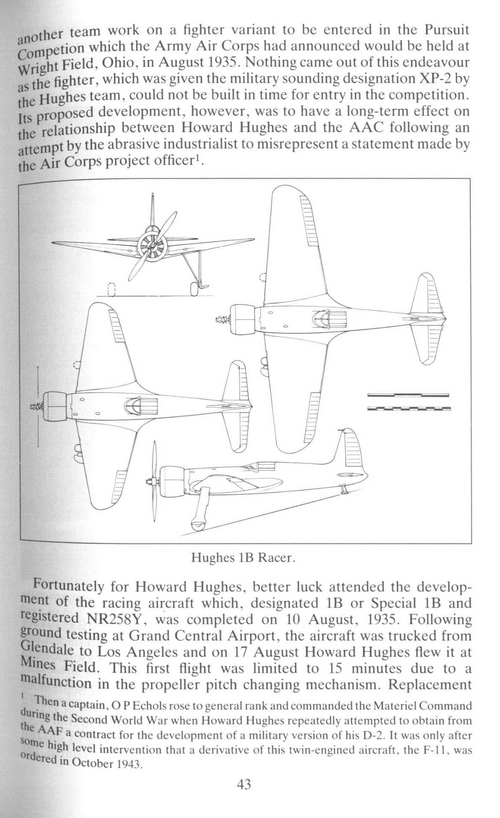
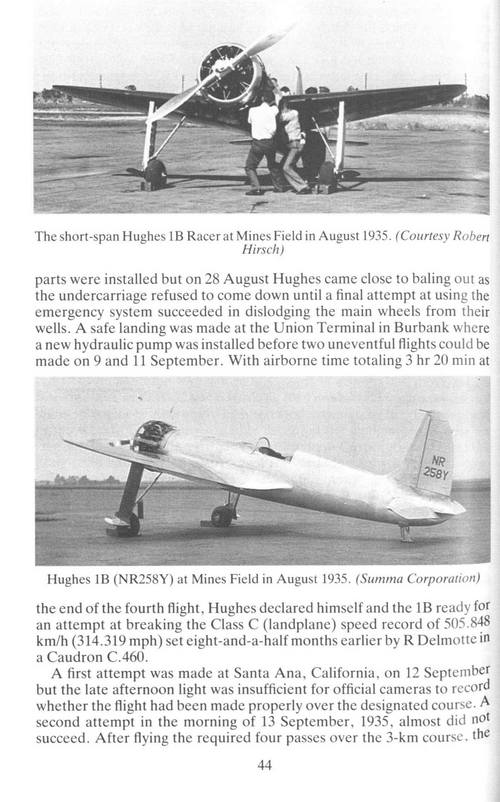
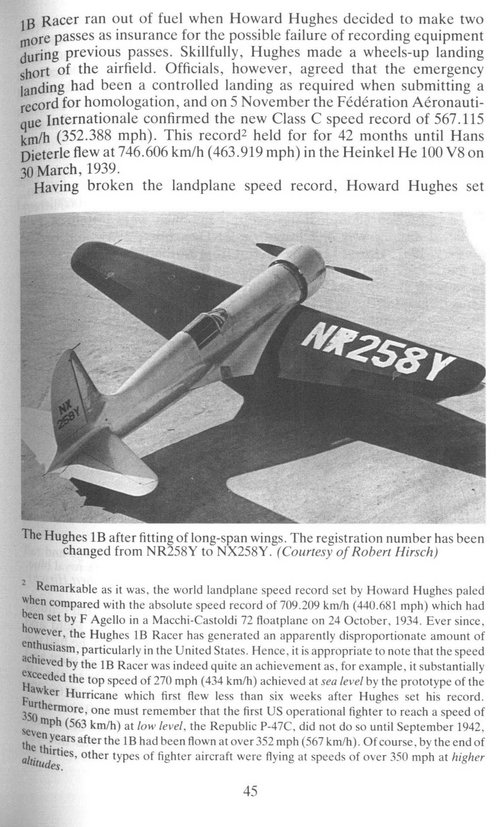
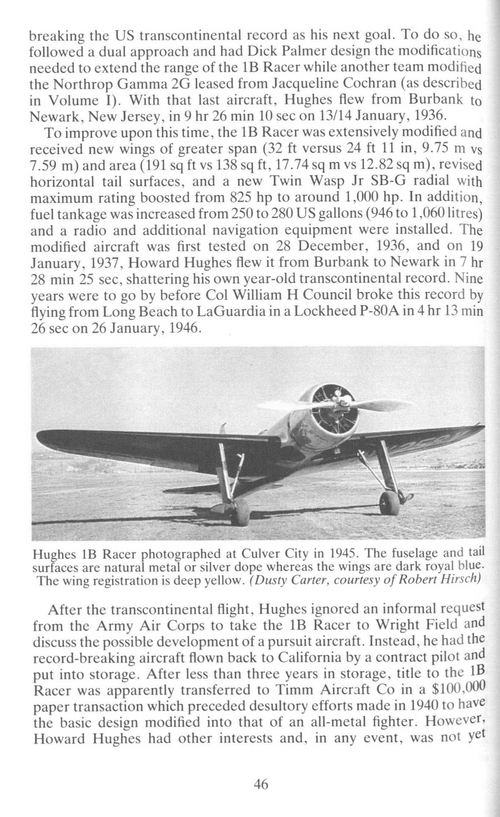
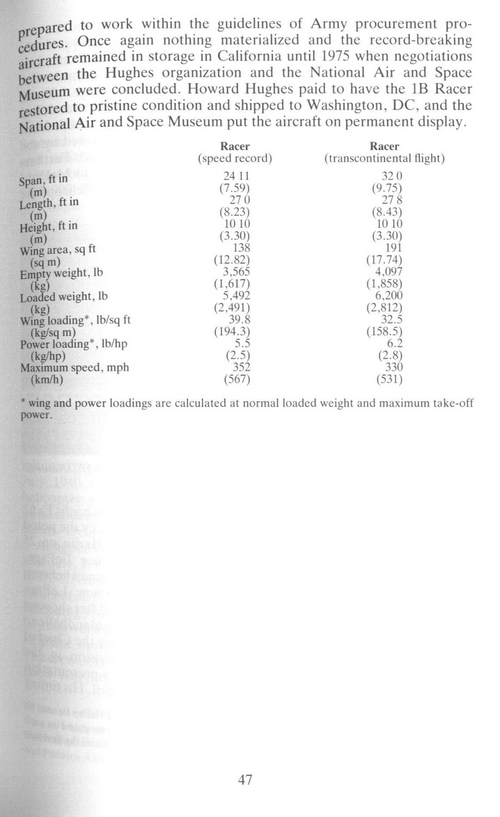
However, there is an error on page 47.
Because it states 330 miles as the maximum speed, whereas 330 miles was the average speed.
Because as Howard Hughes himself says in this interview, he flew at 375 miles per hour.
Last edited:
PabloSniper
ACCESS: Confidential
- Joined
- 16 June 2024
- Messages
- 52
- Reaction score
- 58
- Joined
- 1 May 2007
- Messages
- 2,590
- Reaction score
- 1,928
Re: Hesham's suggestion that the XP-2 was also the D-1, in the article linked HERE, that after the rejection of the XP-2 proposal, Hughes submitted a design to the requirement which led to the Lockheed P-38.
As this design was to have been twin engined, like the D-2, could this have been the D-1 ?
cheers,
Robin.
As this design was to have been twin engined, like the D-2, could this have been the D-1 ?
cheers,
Robin.
PabloSniper
ACCESS: Confidential
- Joined
- 16 June 2024
- Messages
- 52
- Reaction score
- 58
- Joined
- 26 May 2006
- Messages
- 34,500
- Reaction score
- 15,281
My dear Robunos,Re: Hesham's suggestion that the XP-2 was also the D-1, in the article linked HERE, that after the rejection of the XP-2 proposal, Hughes submitted a design to the requirement which led to the Lockheed P-38.
As this design was to have been twin engined, like the D-2, could this have been the D-1 ?
cheers,
Robin.
Thst's not right, the competitor from Hugbes to X-608 contest was H-2,and it was not D-1.
- Joined
- 25 July 2007
- Messages
- 4,257
- Reaction score
- 4,066
... Thst's not right, the competitor from Hugbes to X-608 contest was H-2,and it was not D-1.
Are we quite sure about that?
Robin was talking about the attached clipping from Air Power History, Fall 2007, pg 37.
Later, on the same page is this: "In later years [Hughes] would accuse Lockheed of stealing his design, but there is no evidence for this." Footnotes explain that this claim sprang from Lockheed hiring some of Hughes laid-off employees in the Autumn of 1936. While testifying before Congress in 1947, "Hughes insinuated that Lockheed had gotten the idea for two-engine fight[ers] from his former employers." (Pg. 39)
Thus, we are talking about a 1936 interceptor design which the USAAC had specified was to be powered by 2 x V-1710 V12s fitted with GE turbosuperchargers. So, what exactly prompted Howard Hughes' insinuation of design theft by Lockheed? It strongly suggests a twin-boomed lay-out (possibly with turbosuperchargers set aft).
AFAIK, the initial design for the H-2 had a conventional fuselage with twin endplate-style tails. The nacelles of the wind tunnel model for that first H-2 configuration are somewhat amorphous but suggest radial engines rather than the 'pointier' shape of early Allisons.
-- https://www.secretprojects.co.uk/threads/hughes-d-2-d-5-and-xf-11.5974/#post-49855
Attachments
- Joined
- 8 March 2009
- Messages
- 1,045
- Reaction score
- 1,244
I've posted the designs in one of the other threads on Hughes aircraft. They were conventional, non-boom twins.
Start at page 27161 here; https://www.google.com/books/edition/Investigation_of_the_National_Defense_Pr/e8Ga3wsfU5kC?hl
Start at page 27161 here; https://www.google.com/books/edition/Investigation_of_the_National_Defense_Pr/e8Ga3wsfU5kC?hl
- Joined
- 25 July 2007
- Messages
- 4,257
- Reaction score
- 4,066
Thanks for the reminder, sienar.
Interesting to see that both Hughes designs to specification X-608 - given as the single-seat H-1 and the twin-seat H-2 - were still powered by two Twin Wasp Juniors "although they do provide for the use of [the requested] Allison V-1710 engines instead of the Pratt & Whitney R-1535-5 engines." (pg 27159)[/B]
Interesting to see that both Hughes designs to specification X-608 - given as the single-seat H-1 and the twin-seat H-2 - were still powered by two Twin Wasp Juniors "although they do provide for the use of [the requested] Allison V-1710 engines instead of the Pratt & Whitney R-1535-5 engines." (pg 27159)[/B]
- Joined
- 26 May 2006
- Messages
- 34,500
- Reaction score
- 15,281
Are we quite sure about that?
Of course I am sure,it's opinion of my dear Mr. Tony Buttler.
Similar threads
-
-
Aeromarine PG-1 Pursuit/Ground Attack Aircraft
- Started by Dynoman
- Replies: 21
-
-
-

